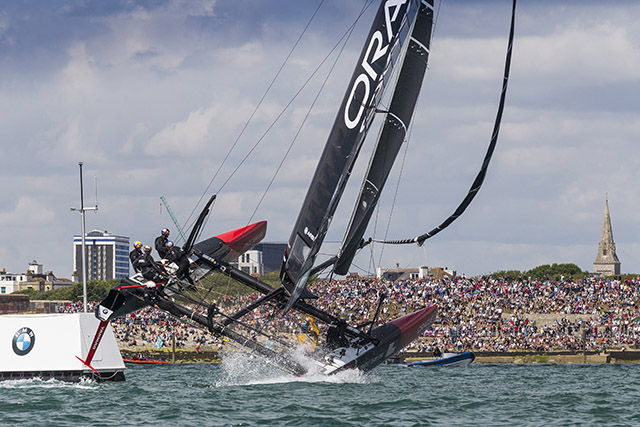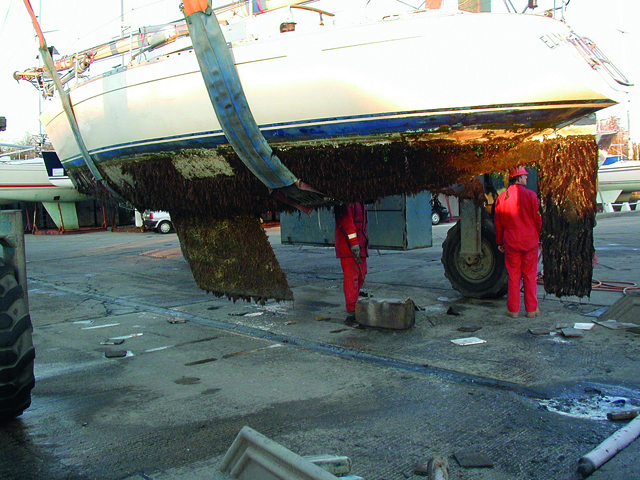'As for what it means for the wider world of sailing – well, where racing design leads, cruising design often follows..." says PBO boat tester David Harding.
The Beneteau group has announced that the third generation of Figaro Beneteau One Designs will be launched in 2019 for the 50th anniversary of the Solitaire URGO du Figaro single-handed race.
Over the last 16 years,the Figaro Beneteau has prevailed as the quintessential racing yacht for any sailor wishing to compete offshore and has proved to be robust.
However, the company says it is time to introduce some of the more recent technological innovations to this old reliable.
Designed by VPLP Design, the first Figaro Beneteau 3 prototype has entered the production phase and will undergo trials in late 2017.
‘Le Figaro’ is considered a vital step for those aiming for the elite stage of solo sailing, the Vendee Globe.
The foils
In contrast to the foils on the Vendée Globe’s Imoca 60, the latter will have an inward-facing profile, as naval architect Vincent Lauriot-Prévost explains: ‘The versatile foil we’ve created provides more than just the dynamic power and vertical lift that is sought after in Imoca. We’ve designed it in such a way that it creates as little resistance as possible in the light airs and reduces leeway at full speed.’
The hull below the waterline
Made of foam sandwich, glass fibre and polyester resin, it is in line with current designs. The most signi cant change is the disappearance of the ballast tanks.
The keel
Deeper, with a narrower keel n, it will generate less drag.This will be accompanied by the reduction in leeway created by the foils.
Mast and sail plan
As is the case on the Imoca60, the mast is stepped further aft, which enables the incorporation of more high-performance sails and a bowsprit is attached.The solo sailors will sail with a fathead mainsail, a genoa and of course a jib, as well as a masthead spinnaker (measuring 105m2) and, to seek out speed in the light airs, a small gennaker.
Technical specifications
LOA: 10.85m – Hull length: 9.75m – Waterline length: 9m – Max beam: 3.4m – Waterline beam: 2.4m – Draft: 2.5m – Light displacement: 2900kg Ballast: 1100kg – Mainsail area: 39.5m2 – Jib area: 30.5m2 – Large spinnaker area: 105m2.
“We live in exciting times”
PBO boat tester David Harding said: ‘Those of us who test boats are always wondering where yacht design will go next. But until recently it would have been a brave man – or woman – who put money on the appearance of a production foiling offshore monohull.
‘Many people’s first experience of foils was when the ever-innovative International Moths sprouted them over 10 years ago. As a yachting photographer I saw cruising sailors getting the shock of their lives when a fleet of Moths appeared from nowhere and silently flew past at 20 knots.
‘Other dinghies with one, two and three hulls have since started foiling and, of course, even people who barely knew their port from their starboard witnessed the spectacle of the AC72s at the America’s Cup in San Francisco.
‘So although dinghies and racing multihulls have been lifting right out of the water on foils for some time, the arrival on the scene of foiling monohulls – and offshore foiling monohulls at that – caught many people unawares. Rather like a foiling Moth, the idea seemed to appear silently out of the blue. Indeed, many armchair sailors first heard of it only when the IMOCA 60s, such as Alex Thomson’s Hugo Boss, appeared with foils that gave them a turbo-boost in performance.
‘The lift generated by the working foil allows them to sail faster in lower wind speeds than ever before, though there comes a point at which the foil has to be retracted to stop the boat taking off and sustaining damage. The foils work to generate lift in conjunction with the canting keel, the interaction between the two being a critical element in performance.
‘It’s undoubtedly a bold move for Beneteau to adopt foils and a canting keel on the Figaro 3, but the Figaro boats have always been a training ground for sailors aspiring to take part in top-level offshore competition. I have photographed the Figaro 2s over the years and also been lucky enough to sail on them with members of the Artemis Offshore Academy, and I have little doubt that this development will be widely welcomed.
‘As for what it means for the wider world of sailing – well, where racing design leads, cruising design often follows. It doesn’t follow that we’ll all be doing an Alex Thomson. For a start we’ll try to keep both foils intact, and we might not choose to test them in the Southern Ocean at 30 knots. Then there are all sorts of logistics and practicalities to consider as well. But who knows?
‘In 10 years’ time maybe foils will be as common on new racing boats as turbos are on diesel engines. Or maybe they won’t. Either way, we live in exciting times.’
Why you should race your cruising boat
Ben Meakins finds out why – and how – PBO readers from around the UK go racing in their cruising
‘Swings and roundabouts’ for the Vendée Globe race leaders
'It's brutal. Absolutely brutal. I do wonder why I do this sometimes", says Britain's Vendée Globe contender Alex Thomson
Refit a racer for cruising
Eighteen months after winning the 2009 OSTAR in his Sigma 33C, Elmarleen, Will Sayer talks to Ben Meakins about his…
French Navy helicopter captures stunning Vendée Globe shots
A French Navy helicopter captured some stunning Vendée Globe race footage of British yachtsman Alex Thomson and his closest rival…
Frank Cowper – Sailing Tours the forefather of modern cruising
Frank Cowper published the first amateur cruising guides 120 years ago. Ben Meakins reads Cowper’s Sailing Tours and plans his…
How to watch the ACWS Portsmouth from the water
Today marks 100 days until the Louis Vuitton America’s Cup World Series Portsmouth 2016.
Wreck to Transat racer
Is racing across the Atlantic in a boat bought with a student loan really feasible? Here's the story of PBO…
Sir Ben Ainslie launches British America’s Cup challenge
The Duchess of Cambridge supports the Ben Ainslie Racing team's proposed British America's Cup bid











